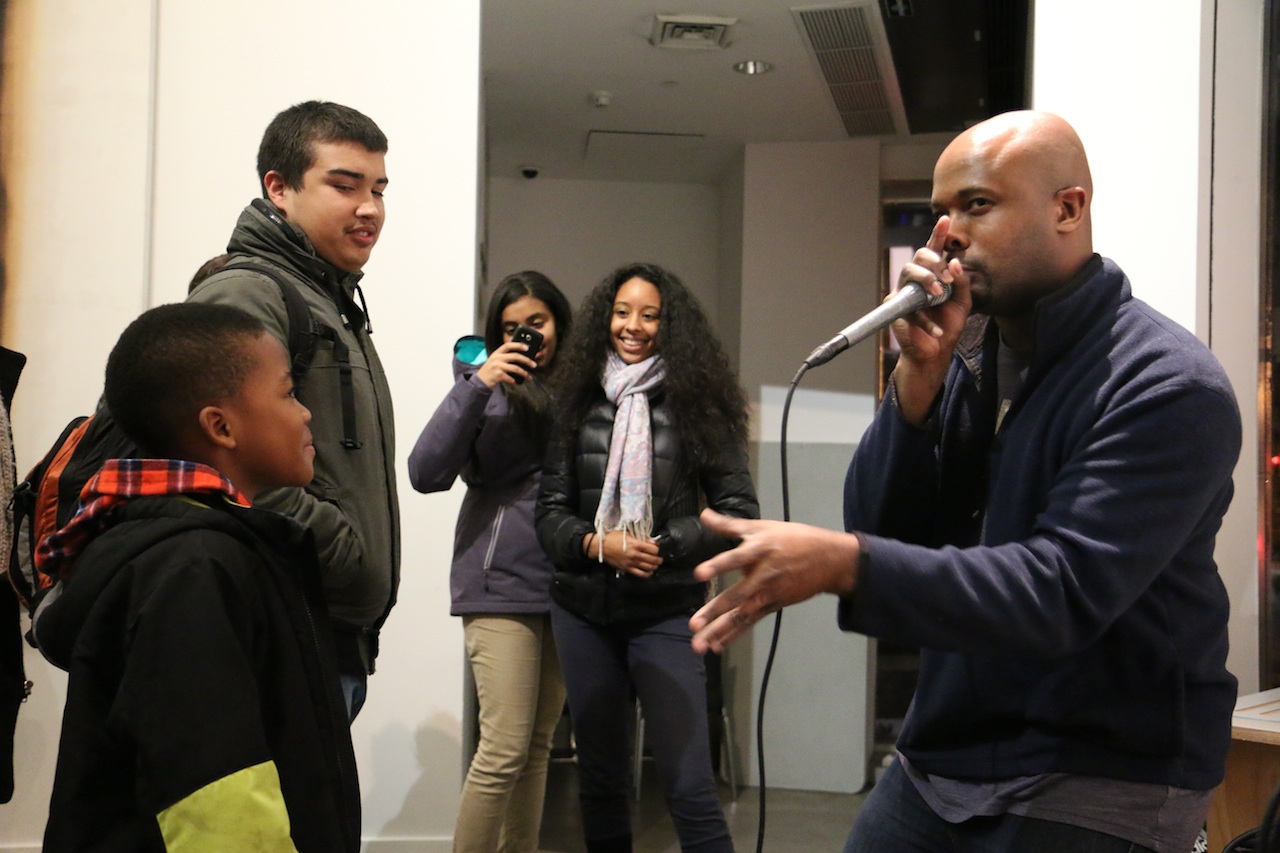
“American Beatboxer” links genre to its hip-hop origins
The art of beatboxing is thriving, according to the creators of a documentary that was recently screened at the Bronx Museum of the Arts. American Beatboxer documents the genre’s first ever championship, which was held in Brooklyn in 2010 and attracted competing participants from across the country.
The film’s director, Manauvaskar Kublall, its producer, Rich McKeown, and its executive producer, Chesney Snow, who is also the head of the American Beatboxing Organization, all came to the Dec. 12 screening to spread the gospel of the art form.
Although the use of vocals to create percussive sounds is nothing new, the use of the human voice to emulate percussion instruments in beatboxing has its origins in hip-hop. American Beatboxer highlights the genre’s early years when aspiring New York hip-hop artists used their mouths to mimic the distinctive sounds of early drum machines. Over the years the genre has evolved from the simpler vocal drumming effects of early pioneers such as Doug E. Fresh, the Fat Boys, and Biz Markie, to incorporate more diverse styles and sounds.
In addition to its coverage of the first-ever organized national competition, the film also documents Snow’s work with students at the Lavelle School for the Blind in Queens, where he created a beatboxing curriculum. The offering has since become very popular with students.
The filmmakers said that although the genre caught on in Europe years ago, U.S. audiences have only recently begun to embrace it. As increasing numbers of Americans have been drawn in, Snow said, he developed the idea of launching the national competition. The championship depicted in the film took place over one weekend, and spotlights all of the finalists.
McKeown, who spent the entire championship weekend behind the camera, said he could sense the power of what was unfolding while videotaping an early round of performances.
“I looked through the viewfinder and thought, ‘oh my God. There’s no way I’m not getting this movie released,’” he recalled.
The film premiered at the Schomburg Center for Research in Black Culture in Harlem in May 2013. Since then, its creators have crossed the country to screen it at film festivals and college campuses. Recently, it was screened at Harvard, and inducted into the Ivy League university’s hip-hop Archives. The film’s allure was so profound, Kublall said, that many who had had no prior exposure to the art form began trying their hand—and voice—at it.
“Most folks, when they leave this film, they want to beatbox,” he said.
At a question and answer session at the museum right after the screening, Snow underscored the genre’s undaunted spirit.
“All your life, you hear ‘don’t, don’t, don’t,’” he said. “Beatboxing says ‘do.’”
The evening closed with a performance by one of the film’s star contestants, Chris Celiz, who performed along with Snow. The two traded the mic back and forth as they spit intricate beats using only their vocal cords. The crowd gave them a standing ovation when they were done.
Afterward, Celiz said he was confident that beatboxing is catching on with audiences in all five boroughs.
“Right now, it’s a beautiful time to be a beatboxer,” he said. “Especially in New York.”

